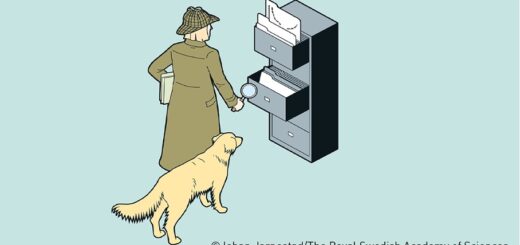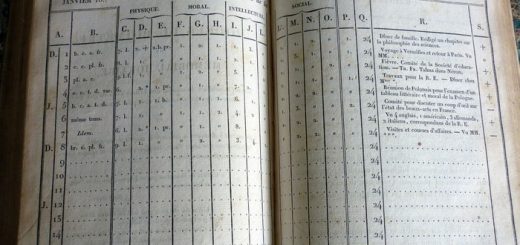The Enemy from Within: a retrospective glimpse at emergency legislation

The recent pandemics has focused public attention on the impact of emergency sanitary measures on the fundamental rights of citizens. All over the world the freedom to move, to exercise activities, to meet and to protect one’s privacy, have been violated by different state authorities on the ground of public safety. The debate has brought to light the poor definition and inadequate articulation of what a constitutional “state of emergency” might imply. Everywhere crucial decisions have been delegated by governments to a random selection of central and local authorities and to non-elected health agencies.[1]
The issue had already emerged over the last two decades in the context of the struggle against terrorism.[2] However, while anti-terrorist derogations to civil rights could be seen as targeting supposedly criminal minorities, the present measures affect the population at large. This is not the place to address the complex implications of resorting to a state of emergency in various political systems. What I would like to do here is to offer a brief insight into one of the earliest modern instances of emergency legislation: the French Decree of 1793 known as “loi des suspects”, a kind of forerunner of the contemporary Patriot Acts. I believe this example is instructive as it shows how a given set of norms can be interpreted at the same time as supporting arbitrary rule and as offering protection against it.[3]
Skeletons in the closet
In the late 1810s three elderly gentlemen, French exiles living in comfortable circumstances in Brussels, would meet occasionally to discuss some fine point of legal interpretation. The best known (and richer) of the three was Emmanuel Sieyès, one of the most prominent constitutionalists of the age. The other two, Philippe Merlin de Douai and Jean-Jacques Régis Cambacérès, though not as famous, were no less influential. As well as being responsible for redesigning France’s judicial institutions, they had worked together on her new civil code of 1804. Known as “Code Napoléon”, this document exercised a decisive impact upon the civil law of several countries in Continental Europe and also of the former Spanish colonies in South America, of Quebec and Louisiana.
The reason why the three eminent jurists found themselves in exile in Belgium was very remote in time: some thirty years earlier, together with an overwhelming majority of the Legislative Assembly (the Convention), they had voted at the King’s trial in favour of Louis XVI’s conviction. While their being on record as regicides has eventually lost its relevance for posterity, historians have not forgotten the fault that still weights upon the reputations of Merlin de Douai and Cambacérès: their expert contribution to the drafting of the emergency legislation adopted by the Convention on 17 September 1793 to promote the arrest of the enemies of the Republic hiding inside her frontiers. In the course of long political careers stretching from the Estates General to the Empire, Merlin de Douai and Cambacérès had been guilty of all manner of compromises, changing of sides and betrayals. Yet the embarrassing skeleton in their closet remains unquestionably the choice of having provided a legal framework for “terrorist” policies.
Unlike them, Sieyès had not contributed to any special laws – probably not because he objected in principle, but for a variety of personal motives. However, because of his high profile as revolutionary theorist and legislator, his collaboration has often been taken for granted, especially by his detractors. When at the end of the 19th century the papers of a notorious royalist agent resurfaced in England with allegations of a secret complicity between Sieyès and Robespierre to orchestrate Terror, they gained some credit with historians in spite of being obvious fabrications. But why does the “collaboration” of jurists to policies supported by a large majority of the political class seem so scandalous?
Enemies of liberty
By the Summer of 1793 the situation of the revolutionary government was quite desperate. The French armies struggled to hold the front and a foreign invasion seemed imminent. There were so called “federalist” rebellions in several major cities across France and what amounted to a civil war in the Vendée. This led to a growing fear of the “enemies from within” conspiring against the Republic: royalist and foreign agents, émigrés, refractory priests, traffickers and speculators, deserters and so on. Everywhere the government struggled to control the revolutionary militants who wished to deal with such suspect persons in their own way; the deputies sent to restore order in the rebel towns were also inclined to take radical initiatives, ordering arrests and executions.
At this stage France was already technically in a state of emergency: the newly adopted Constitution of 23 June 1793 had been suspended (locked away in a cedar-wood casket placed at the feet of the President of the Convention) until the end of the war, together with the Declaration of rights that went with it. The Convention then instructed the “Comité de législation” (the committee that gave proper form to the laws voted by the assembly) to produce a decree defining precisely the conditions for the arrest of “suspected” persons. Nominally this committee had forty-eight members, but only a dozen of them were in Paris at the time, and even fewer attended meetings. With a solid legal background and an astonishing capacity for hard work, Merlin de Douai and Cambacérès were the obvious candidates to perform the task; Merlin de Douai was designated as rapporteur to the Convention.
Their brief was a tricky one as the Decree did not just define criminal actions, but the intention or predisposition to commit them. Were considered “suspects” all those who “by their conduct, their relations, their words and writings” showed themselves to be “partisans of tyranny and federalism” (i.e. royalists and supporters of the local revolts) and “enemies of liberty”. Some specific categories of people were suspect because of their quality: former nobles (and their families), émigrés, public officials who had been dismissed or refused to serve in danger zones near the front, those who had been denied certificates of “civisme” and so on. (An interesting modern analogy would be Italy’s anti-mafia legislation of 13 September 1982 – Legge 646 – that allows prosecution not just on the ground of criminal acts, but of proximity and influence).

The emblem of a Comité de Surveillance.
Understandably the jurists were uneasy with some of these classifications and their copy was criticised and revised by the Convention several times to make it more inclusive. The important point is, however, that the Decree only allowed the detention of suspects (in “adequate conditions”: the usual 18th century bring-your-own-food-and-furniture arrangement) or their house arrest until eventually the end of the war. Possible suspects were identified by the Comités de Surveillance, a kind of improvised local police attached to the Communes; a committee had to agree by a majority of at least seven votes over twelve; the arrest was then reported to the Comité de Sûreté Générale (yet another committee of the Assembly that exercised police functions); finally the dossier was transmitted to the Revolutionary Tribunal to be assessed by magistrates and juries. There is ample evidence to show that neither torture nor rape were used to put pressure on the prisoners, though of course they might have been threatened or intimidated. As it happens a few months earlier Cambacérès had organised the transformation of the old Tribunal of Cassation into the new Revolutionary Tribunal (“Tribunal criminel spécial”) to deal with those guilty of any counter-revolutionary activities. Later Merlin de Douai, who had some experience of running tribunals as former President of the “Tribunal criminel du Nord”, improved the Tribunal’s capacity by dividing it into four sections and allocating it a far larger number of judges and jurors.
It is only too easy to argue that the “loi des suspects”, for all its complicated network of committees, provided a thin legal veneer to a project of systematic elimination of political enemies. Unfortunately the numbers of people arrested, released or executed during Terror remain difficult to assess and highly controversial; in particular, because of the time-lag, it is impossible to disentangle the impact of the Decree of 1793 from that of the far harsher Decree of 22 Prairial (10 June) 1794 introduced by Couthon and Robespierre and associated with the Great Terror. It is clear, however, that the Committee of Public Safety, dissatisfied with the slowness of legal procedures, decided to take things into their own hands, placing repression under the direct control of the executive: precisely the outcome the jurists had tried to avoid by relying instead on the legislative and the judiciary.
The reign of justice
Like Sieyès, Merlin de Douai and Cambacérès belonged to the Plaine, the moderate centre of the Convention. Consequently, the more sympathetic of their biographers have suggested that they only contributed to terrorist laws because they were threatened and intimidated by the Jacobins. Any sane man in their position had reasons to be scared at the time, and no doubt some were more frightened than others. (According to Michel Biard, between 1792 and 1795, 86 members of the Convention out of 749 were assassinated, executed or committed suicide.[4]) But it would be wrong to assume that fear was the motive behind the moderates’ cooperation. On the contrary, they were sincerely convinced that extraordinary means were required to save the Republic. As Merlin de Douai explained to a correspondent: “the measures were harsh but necessary and indispensable”. Probably they did not relish having to work under the supervision of agitated and quarrelsome politicians. But unlike the prickly Sieyès, as very successful private lawyers they were used to handling difficult clients.
At least, faced with the state of panic of the Convention, they were guided by a clear purpose: random violence, by rebel crowds, militant groups or government agents, must be stopped; the measures introduced to control the actions of dissenting elements must be temporary, and placed under the double authority of the legislative and of the judiciary. Carefully distant from factional infighting, the jurists were indeed (as Sieyès famously suggested) trying to survive, but they were also pursuing a secret utopia of their own. For them the Revolution meant that France should become not a playground for the display of civic virtues, but “the reign of justice”; it must be framed by constitutional rules and governed by well-conceived, just laws, efficiently applied by a well-oiled institutional machine. After Thermidor, when the worst of the Terrorist phase was over, this is the objective they continued to pursue, as magistrates, ministers, directors or consuls, donning whatever official garments the subsequent regimes would offer them. The regimes would pass, but the solid edifice of codes, rules, procedures and offices they had almost surreptitiously built would remain.
Invisible enemies
Emergency legislation is generally the response to a situation of fear and confusion. It is introduced to address some impending threat, but also (and above all) to convince the public that something radical is done to protect them and to secure their acquiescence. The grounds for fear can be real enough, though they are often magnified by propaganda and popular imagination. There were actually hostile agents and counter-revolutionary conspiracies in France in 1793, as there are secret terrorist cells around the world today. The bellicose language adopted by some politicians in response to the pandemics (fighting an invisible enemy, we are at war, together we can win etc.) seemed better suited to an invasion from outer space than to a health crisis, but the risks for the population did exist. But precisely because they are a response to panic, emergency measures must be unaffected by it. They should be clearly formulated (possibly worked out in advance), specific, limited in time and especially placed under transparent political responsibility; otherwise, they might easily become the instruments of arbitrary power, rather than the means to secure collective safety. Unless we are vigilant, the invisible enemies represented by the systematic confusion of powers, the lack of transparency in governments’ actions and a public indifference to abuse might well take residence inside our democratic institutions.
Biancamaria Fontana is Emeritus professor of History of political thought at the University of Lausanne, and a member of the Walras Pareto Centre for the history of economic and political thought. She is the author, among many other books, of Germaine de Staël: A Political Portrait and Montaigne’s Politics: Authority and Governance in the Essais. She is also the editor and translator of Benjamin Constant’s Political Writings, and a regular contributor to the Times Literary Supplement. Her book La République helvétique, laboratoire de la Suisse moderne is forthcoming.
Footnotes
- See Antoine Chollet, “En état d’urgence”, entretien, swissinfo.ch, 20 mars 2020, and on this blog his Réponse à Agamben sur l’état d’exception. ↩
- See Bernard Manin, “The Emergency Paradigm and the New terrorism”, in S. Baume and B. Fontana (eds), Les usages de la séparation des pouvoirs, Paris, Michel Haudiard, 2008, 136-171. ↩
- This example is based on the following literature: Michel Biard, La liberté ou la mort: mourir en député 1792-1795, Paris, Tallandier, 2015; Antoine Boulant, Le Tribunal révolutionnaire, Paris, Perrin, 2018; Jean-Dénis Bredin, Sieyès, la clé de la révolution française, Paris, Editions de Fallois, 1988; Thierry Lentz (ed.), Napoléon et le droit, Paris, Editions du CNRS, 2017; and Timothy Tackett, The Coming of Terror in the French Revolution, Cambridge Mass., Harvard Belknap Press, 2015. ↩
- See Michel Biard, La liberté ou la mort: mourir en député 1792-1795, Paris, Tallandier, 2015. ↩
To cite this blog post : Biancamaria Fontana, « The Enemy from Within: a retrospective glimpse at emergency legislation », Blog of the Centre Walras Pareto, June 5, 2020, https://wp.unil.ch/cwp-blog/2020/06/the-enemy-from-within-a-retrospective-glimpse-at-emergency-legislation.



